Yamanashi Prefectural Fujisan World Heritage Center
Fujisan’s Sound World MAP
Main content starts here.
Entertainment Contents
Fujisan’s Sound World MAP
It would be nice to try listening and imagining how time is passing over at Fujisan. Voices of birds and insects that sound in Ochudo forest,sounds generated from religious activities, and more. Would you like to experience the sound world around Fujisan?
![]()
![]()
Birds around Ochudo
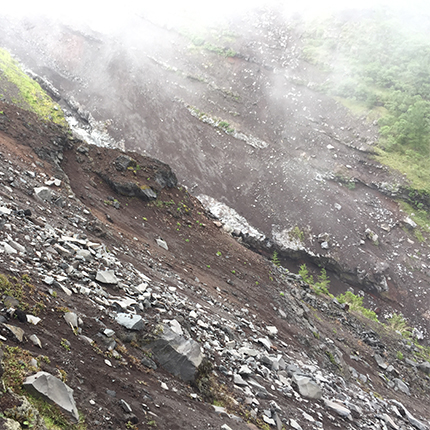
Voices of birds, and sounds of wind blowing in forest, recorded at “Ochudo” way’s section from Fujisan Yoshida Ascending Route’s 5th station parking area through to Osawakuzure. These are the birds’ voices frequently heard on ascending routes around Fujisan’s 5th station in summer.In the latter half of recording, you can also hear slightly the earth crumbling sounds of Osawakuzure mixed with birds’ voices.
Foot of Fujisan in summer
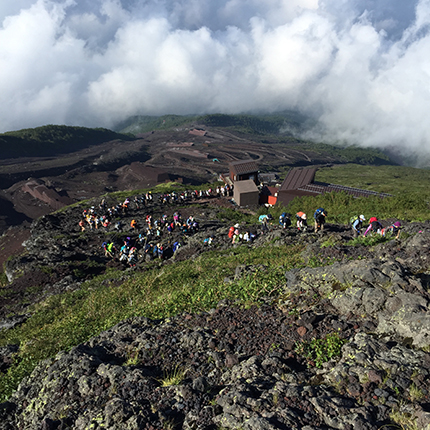
Voices of birds and cicadas recorded at “Senzui”, a Fujiko ruins, at the foot of Fujisan in summer.
Festival commemorating the start of Fujisan climbing season
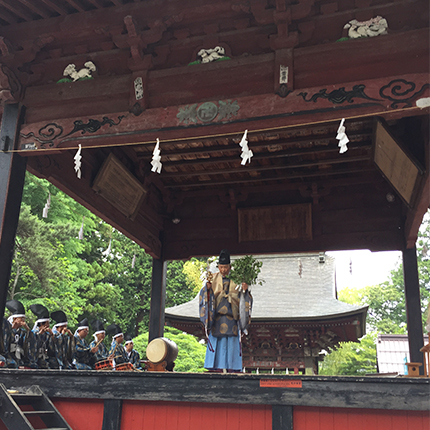
It shows how the festival commemorating the start of Fujisan climbing season is carried out on June 30 every year. Contained in the scene of the parade from Golden tori gate through to Kitaguchi Hongu Sengen-jinja Shrine are: the voices of Fuji-ko believers’ chanting “Rokkon-Shojo”: the roaring of trumpet shells by Yamabushi monks; and the dedication kagura music performed in Sengen-jinja Shrine precinct. With the arrival of parade, Shinto rituals including prayers are performed by Shinto priests. Then, as the sacred rope is cut in concert with their calling of “one, two, three!” during the road-opening ritual, the Rokkon-shojo chanting voices reverberate.
Fuji-ko rite of burning wood sticks
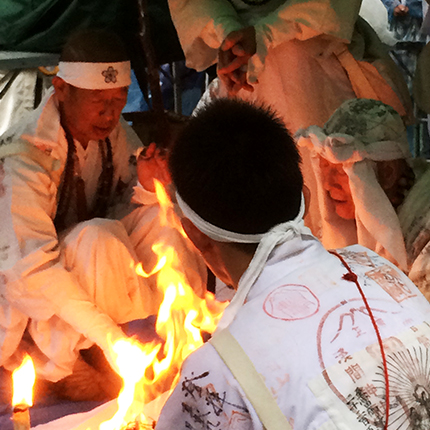
A scene of Fuji-ko rite of burning wood sticks being carried out on a hill named Otsukayama on July 1, the next day of Fujisan’s climbing season opening festival. In the rain, voices of praying priests led by sendatsu, the guide, are so powerful, showing how strong their faiths are.
Hitoana Cave rituals
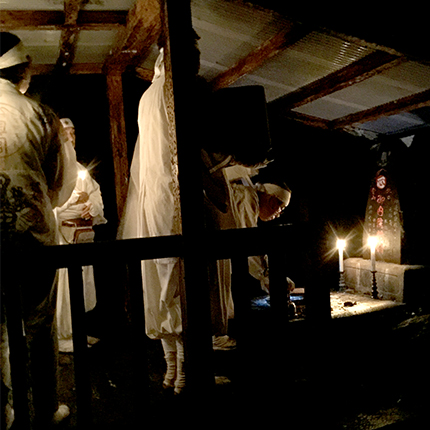
A scene of Hitoana Cave rituals. Inside the dark wind cave where water drops are falling, Fuji-ko believers are praying. Being a sacred place to which people are not allowed to enter normally, they say that it is quite rare for a ritual to be taken place here.
Dedication kagura music and Chigomai dancing
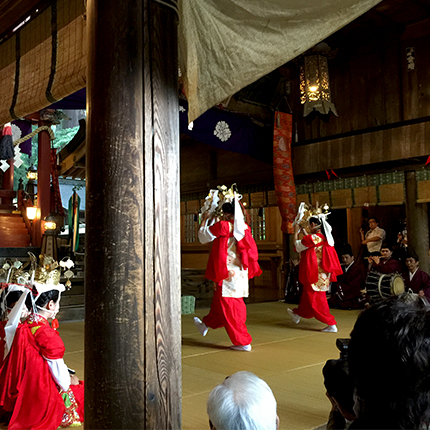
A scene of traditional performing arts carried out at Kawaguchiko Sengen-jinja Shrine on July 28 every year. While many visitors watch this in the shrine’s main hall, Chigomai dance is dedicated starting in the morning until late in the day. Dedication kagura music is heard whenever various ritual performances are held in this area.
Fujisan ascending route in summer
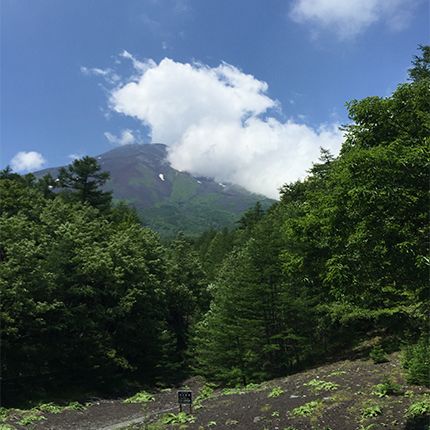
A scene of Fujisan ascending route in summer. A scene of ascending route crowded with many climbers. As more people visiting from abroad, various languages are heard. Aiming to reach the summit, climbers are walking one step at a time while often being carried off their feet by the gravel path. The Fujiko-believers’ bell sounds and chanting voices are also heard.
Religious austerities practice under the waterfall in Takaosan
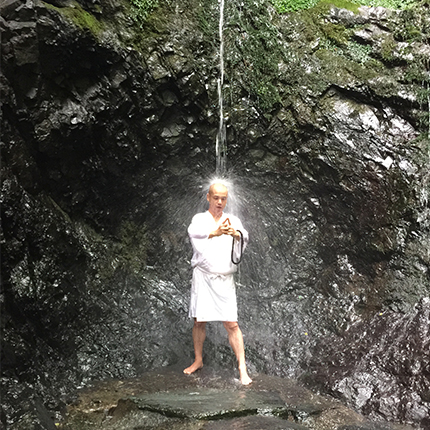
A scene of mountain monk’s religious austerities practice under the waterfall in Takaosan, which is deeply related to the worship of Fujisan. At Jataki waterfall, a water ablution practice spot on Takaosan, Hannya-shingyo Sutra is recited and prayers are practiced.
Religious austerities practice under the waterfall in Takaosan
Fire Festival of Yoshida
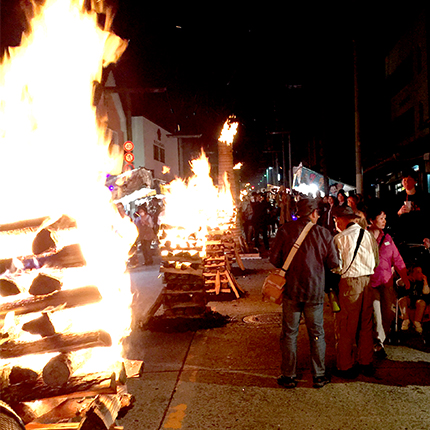
A scene of Fire-extinguishing Festival held on August 26 every year. It starts with a Shinto priest’s action of voicing the sound of “Ohhh” in trying to move the spirit of the dead from the main hall of Kitaguchi Hongu Sengen-jinja Shrine to the mikoshi, a portable shrine. As the mikoshi leaves the precinct which is crowded with many spectators, the parade quickly gets lively. Then the people carrying mikoshi parade along the national road while saying “Yoi, Yoi”, and they knock the mikoshi down to the ground three times at the entrance of Fuji-michi (lit. Road to Fujisan). It makes you feel the fierceness of Fujisan, the mountain of fire. After that, they parade to Otabisho, the resting spot for mikoshi. Then, at dusk, the huge taimatsu torches lined along Fuji-michi road are burned. From afar, the sound of kagura music can be heard endlessly.
Foot of Fujisan in Autumn
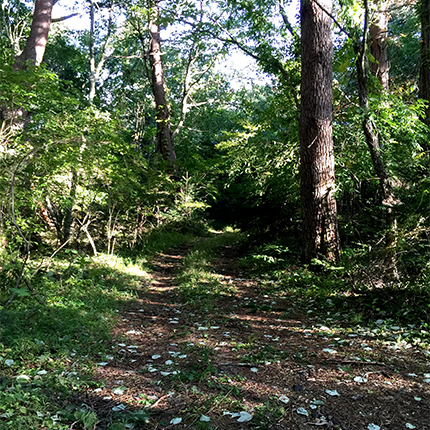
At the beginning of September, a hint of autumn drifts in the air at Fujisan’s foot. Along with the sound of insects such as tree crickets and D. nigrofasciatus,(ground crickets) the sound of sika deer is heard from afar. As it got dark, the sound of an owl also started to be heard.
Copyright © 2016 Fujisan World Heritage Center all rights reserved.